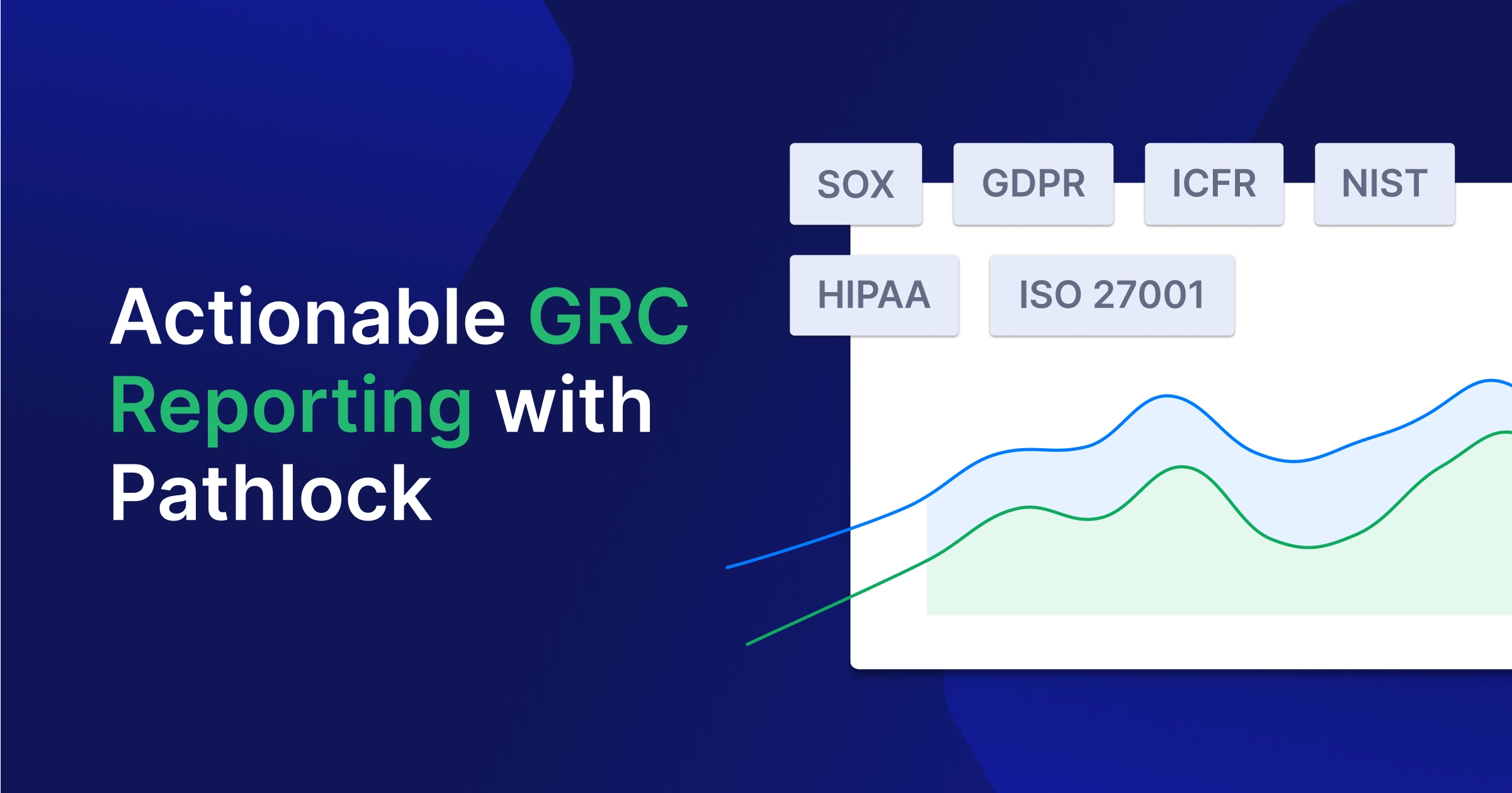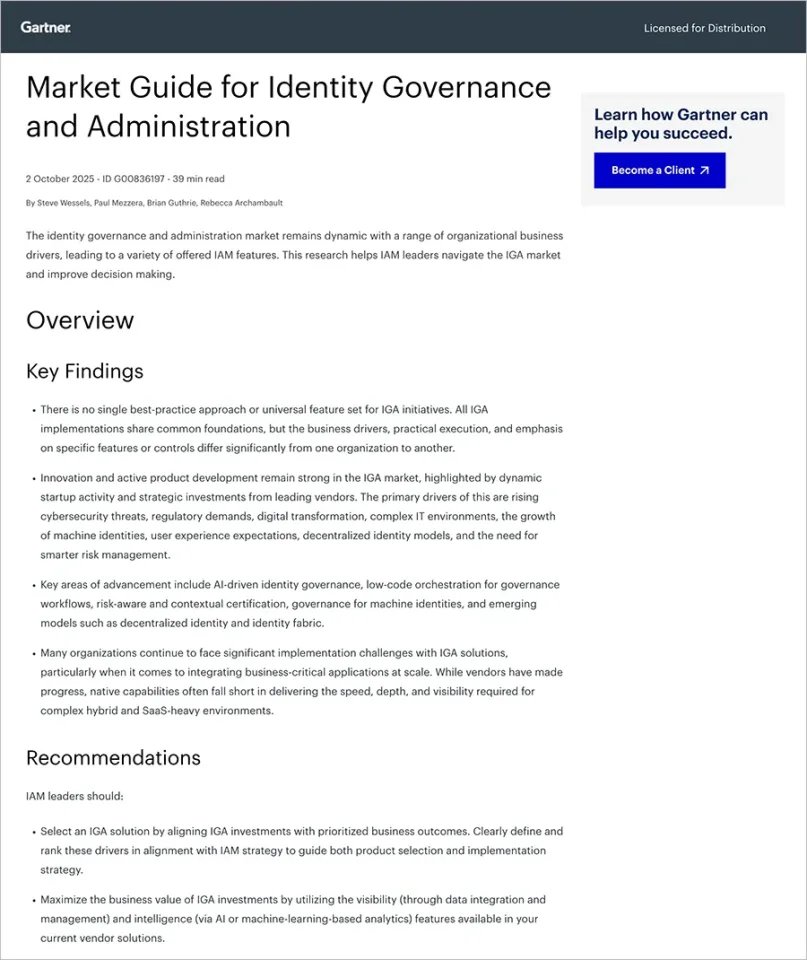The recent 2024 IT Risk and Compliance Benchmark Report, which surveyed over 1,000 IT and GRC professionals, found that more than half experienced a data breach within the last 24 months, and more than two-thirds spent significant amounts of time on manual risk management processes. These alarming statistics underscore the pressing need for robust risk management strategies in today’s increasingly complex business landscape. Automated risk management emerges as a game-changer, leveraging cutting-edge technologies to streamline processes, enhance accuracy, and fortify defenses against evolving threats.
By harnessing the power of data analytics, machine learning, and continuous monitoring, organizations can proactively identify and mitigate risks, optimize resource allocation, ensure regulatory compliance, and cultivate a risk-aware culture throughout the enterprise.
The following post details the structured approach of automated risk management, its multifaceted advantages, and proven strategies for successful implementation, empowering businesses to navigate risks confidently and drive sustainable growth.
What Is Automated Risk Management?
Automated risk management leverages advanced technologies to streamline and enhance the processes involved in identifying, assessing, and mitigating risks. This structured approach integrates data analytics, machine learning, and continuous monitoring to provide a more efficient and accurate means of managing risks. Organizations can proactively address vulnerabilities by automating the collection of vast amounts of data, detecting potential threats through sophisticated algorithms, and conducting in-depth risk analyses.
The system prioritizes risks based on their potential impact and likelihood, generates detailed reports and visualizations for informed decision-making, and continuously monitors the risk landscape to ensure timely detection and response to new threats. This comprehensive method not only improves risk mitigation but also supports regulatory compliance and fosters a risk-aware culture within the organization.
Key Steps in Automated Risk Management
Collecting Data
The foundation of automated risk management lies in data collection. The system gathers a wide variety of information, from financial records and customer data to operational metrics and employee activities. The larger and more accurate the dataset, the better its ability to identify and analyze risks.
Detecting Potential Threats
Employing algorithms and machine learning to actively scan the collected data and identify anomalies or outliers that may indicate potential risks or threats.
Analyzing Risks
Following threat detection, each risk is analyzed in depth. The system evaluates the likelihood of occurrence, the possible impact on the organization, and the severity of the potential consequences. This thorough analysis provides an accurate image of the threats the organization faces.
Ranking Based on Impact and Likelihood
The system then ranks the risks based on their potential impact and the likelihood of occurrence. This prioritization helps direct attention to the most critical threats, enabling organizations to allocate resources and implement mitigation strategies accordingly.
Reporting and Visualizing Risks
After the analysis and ranking, the system generates detailed reports and visualizations. These offer a comprehensive overview of the organization’s risk environment. With easy-to-understand dashboards and charts, organizations can make informed decisions promptly.
Risk Remediation
Generating detailed reports and visualizations to provide a comprehensive overview of the organization’s risk landscape, enabling informed decision-making.
Monitoring Continuously
The final stage of automated risk management is continuous monitoring. This ensures the system detects new threats and changes in existing risks promptly. It also checks the effectiveness of risk mitigation strategies, keeping the organization’s risk profile up-to-date and facilitating swift responses to evolving threats.
The Importance of Automating Risk Management
Automating risk management offers more than just risk mitigation. It cultivates a culture of risk awareness, informs decisions, and helps your organization move forward.
Stay Ahead of Risks: As our world evolves, managing risks becomes more challenging. Automated risk management employs advanced algorithms to detect threats quickly, enabling you to address them before they become major problems. Instead of reacting to risks, you can proactively identify and mitigate them, ensuring your operations run smoothly.
Scale with Your Business: Growth and expansion introduce new risks. Traditional methods may not cope with larger volumes of data and more complicated risk situations. Automated risk management, however, scales with your organization, handling larger data volumes and reducing manual workload, supporting your growth every step of the way.
Enhance Decision Making: Data-driven decisions are key to a successful business strategy. Automating risk management delivers comprehensive, accurate, and current data about risks. This information helps you make informed decisions, aligning your risk management strategies with your overall objectives.
Cultivate a Risk-Aware Culture: Risk management is everyone’s responsibility, not just a specific department. Automated risk management provides everyone with a clear picture of the risks, their possible impact, and the strategies to address them. This transparency encourages everyone to participate in risk management, promoting a culture of shared responsibility and vigilance.
Optimize Resource Allocation: Allocating resources is a key part of any organization. It’s essential to invest your time, effort, and money wisely. Automated risk management helps optimize your resource allocation by identifying the most critical risks. By knowing where to focus your resources, you can mitigate risks more efficiently.
Ensure Regulatory Compliance: Compliance with regulations can be challenging, especially with the many rules and standards you must follow. Automated risk management simplifies this process by providing a transparent view of your risk situation. It identifies any gaps in compliance, offers actionable insights to address them, and maintains a record of your risk management activities. This ensures you’re not just compliant now but also ready for future regulations.
Benefits of Automating Risk Management
Automated risk management has become essential in our current era. Let’s discuss its advantages.
Increased Accuracy
Automated risk management stands out for its accuracy. Traditional methods may fail due to human error, overlooked threats, or incomplete data analysis. Automated tools, however, analyze vast data sets for risk indicators with unmatched precision and speed. This results in a more accurate threat assessment, enhancing the effectiveness of your risk mitigation strategies.
Enhanced Monitoring
Risks can infiltrate quietly and evolve rapidly in our modern times. Automated risk management tools act like vigilant guards, scanning for threats continuously. They provide an ongoing, real-time view of your risk situation, enabling early detection and mitigation of threats before they escalate.
Timely Remediation of Risks
Automated risk management tools expedite risk remediation. They trigger alerts as soon as a threat is detected, ensuring a prompt response. Additionally, these tools provide recommendations for the most effective remediation strategies based on their analysis, equipping your team to tackle threats effectively.
Optimized Costs and Operational Efficiency
Automated risk management not only strengthens your defense against threats but also reduces operational costs. By automating the task of risk detection and analysis, you save time and resources, resulting in significant cost savings. Your team can then focus on strategic tasks that promote business growth, thus enhancing operational efficiency.
Increased Scalability
Manually scaling risk management can be challenging. The growth of your organization correlates with an increase in the quantity and intricacy of the data. Manual processes may not keep up, leading to gaps in risk management. Automated tools, however, can scale with your growth, providing consistent risk protection regardless of the size of your business.
Improved Decision-making
Automated risk management tools provide valuable insights into your risk situation. They offer actionable intelligence, including risk rankings, trend analysis, and predictive modeling. This information allows for informed decision-making, from prioritizing risk mitigation activities to shaping your risk management policies.
Simplified Regulatory Compliance
Staying compliant with ever-changing regulations can be challenging. Automated risk management simplifies this task. It tracks regulatory changes, aligns them with your risk management processes, and identifies any compliance gaps. It also maintains an audit trail of your risk management activities, simplifying reporting and ensuring readiness for regulatory scrutiny.
Automated risk management also encourages a risk-aware culture within your organization. By making risk information readily available, it encourages everyone to participate in risk management. This shift from reactive to proactive risk management results in a resilient organization ready to face future challenges.
Automated Risk Management Best Practices
Maximizing the benefits of automated risk management requires adherence to proven strategies. Let’s examine these strategies for effective risk management.
Risk Inventory and Prioritization
Start with a comprehensive inventory of organizational risks and prioritize them based on their impact. Focusing on the most significant risks first allows for better resource allocation, without overlooking less critical risks.
Identify High-impact Automation Opportunities
Automation should target processes that significantly influence your operations. Identify areas where manual processes impede progress or where human error is a serious concern. This could include data collection, threat detection, or risk analysis. The aim is to improve operations and risk management, not just to automate for automation’s sake.
Choose the Right Risk Management Automation Tools
With a wide array of risk management automation tools available, consider features, ease of use, integration capabilities, and price when choosing. Opt for a tool that can scale with your organization to handle increased data and complexity. A wise choice can streamline your processes, improve accuracy, and provide crucial insights.
Integrate with Existing Systems
Ensure your automated risk management tool integrates with your existing systems, like your CRM, ERP, or accounting software. The more information your tool can access, the more accurately it can assess your risks. Avoid tools that operate in isolation, as they can leave gaps in your risk management. Aim for a tool that provides a comprehensive view of your risk environment.
Educate and Upskill Staff
Training is essential to maximize the use of even the most advanced tools. Make certain that your group comprehends the significance of managing risks and the proper utilization of the respective tools. Through continuous training programs, they can stay current with the most recent advancements and recommended strategies. Provide your employees, who serve as your initial shield against threats, with the necessary information.
Develop a Risk Management Culture
Risk management should be an organization-wide responsibility, not limited to a few individuals or a department. Encourage transparent discussions regarding potential hazards and their consequences while fostering a forward-thinking approach to recognizing and reporting such hazards. Being conscious of possible dangers can bolster your efforts to manage risk.
For any firm, employing automated techniques for managing risk is a sturdy approach. Following these recommended strategies can enhance its efficacy and safeguard your establishment from potential risks.
Automate Your Compliance and Risk Management with Pathlock
Pathlock Continuous Controls Monitoring (CCM) revolutionizes compliance and risk management by automating key tasks, enhancing efficiency and accuracy, and reducing team workload. Pathlock’s CCM can monitor 100% of transactions and quantify the financial impact of control violations in areas like invoicing, payments, and treasury.
- Proactive Issue Resolution: Pathlock CCM detects control issues in real time, optimizing SAP system performance and minimizing operational disruptions.
- Efficient Resource Utilization: Pathlock CCM automates monitoring, reducing the need for manual audit preparation and allowing organizations to allocate resources to more strategic tasks.
- Change Management: Continuous monitoring ensures control effectiveness after SAP system updates, reducing vulnerability risks.
- Audit Efficiency: Provides auditors with up-to-date control information, streamlining audits and offering a more accurate security assessment.
- Data Integrity: Ensures master data and system configuration accuracy within SAP systems, promptly identifying and addressing anomalies.
- Risk Quantification: Pathlock CCM uniquely translates risks into financial terms, promoting a culture of data-driven risk management and fostering transparency, accountability, and proactive risk mitigation throughout the organization.
Learn how Pathlock automates key processes like transaction monitoring and control audits to deliver a comprehensive view of risk within your SAP applications. Get in touch with us.



